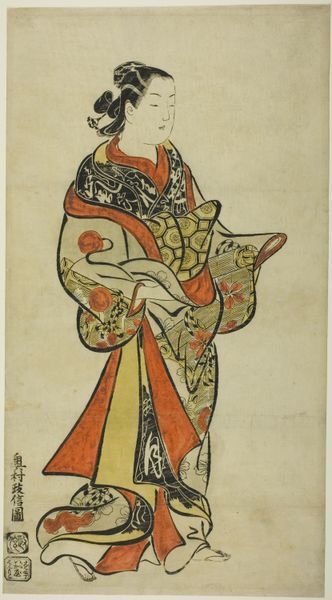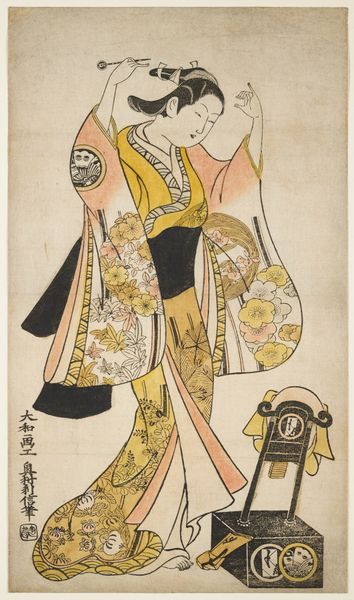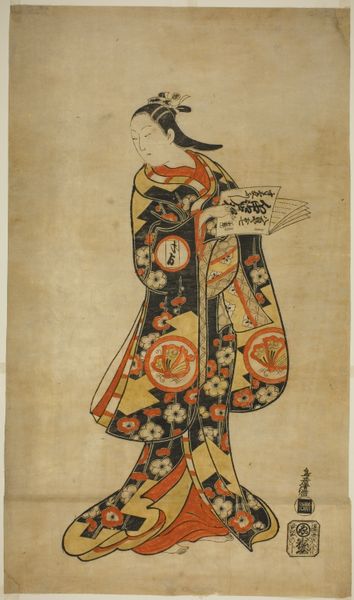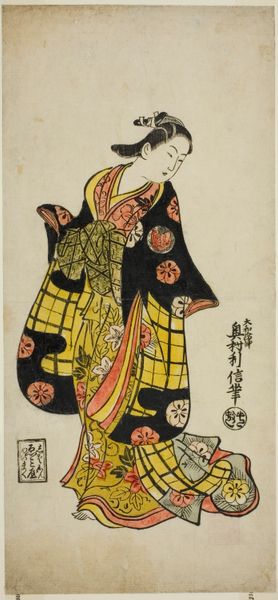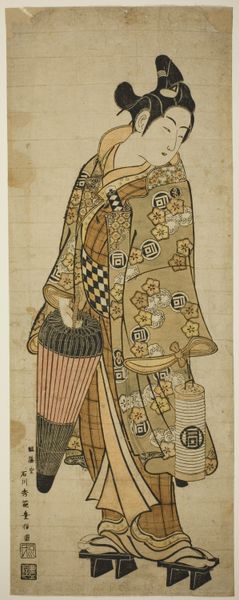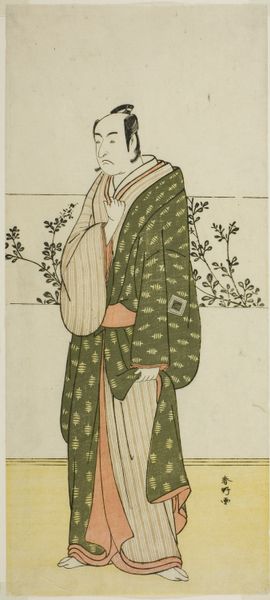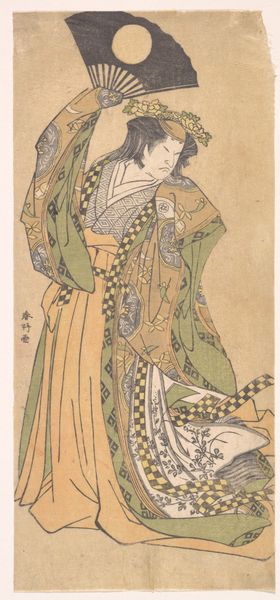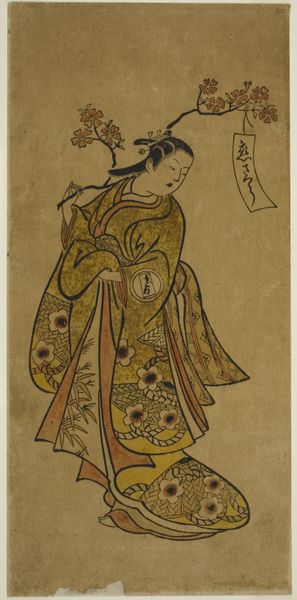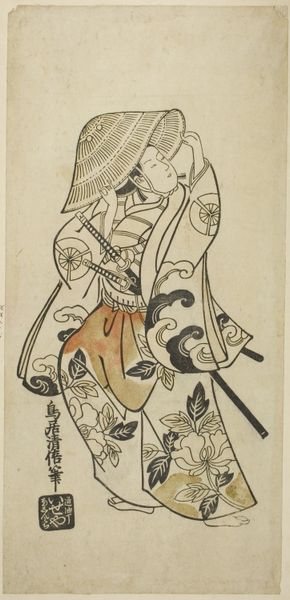
print, woodblock-print
#
portrait
# print
#
asian-art
#
ukiyo-e
#
woodblock-print
#
genre-painting
Dimensions: 71.0 × 26.1 cm (28 × 10 1/4 in.)
Copyright: Public Domain
Editor: Here we have Ishikawa Toyonobu’s woodblock print, “The Actor Sanogawa Ichimatsu I as Hisamatsu,” from around 1748. It’s striking how the patterned robe dominates the composition. What's your interpretation of this work? Curator: I see this print as a fascinating commentary on gender, representation, and social roles within the context of 18th-century Japan. The fact that we're seeing an actor *playing* a character immediately introduces layers of performance. What does it mean to depict a male actor in the guise of a female character, especially one known from popular Kabuki theater? Editor: It's interesting to think about performance on so many levels. What was the significance of Kabuki at the time? Curator: Kabuki was a hugely popular, yet often policed, form of entertainment for the emerging merchant class, the *chonin*. It allowed for a degree of social transgression, particularly in the crossing of gender roles. An actor becoming a vessel through which to experience non-normative ways of existing becomes incredibly powerful, almost an act of resistance. How does this complicate our modern understanding of gender and identity? Editor: So, the image might be a statement about blurring boundaries rather than just a portrait? Curator: Precisely. And we must consider who *this* image was for. Ukiyo-e prints were part of a thriving popular culture, consumed by a public hungry for images of fashionable actors. By possessing this print, viewers actively participated in celebrating a performer who was already subverting societal expectations through the theater. To understand this, we need to appreciate that art becomes deeply woven into societal progress and transformation. Editor: I see! It’s about the intersection of performance, identity, and the public’s participation in those ideas. It makes you consider all these complex angles you wouldn't necessarily think of when you just look at the picture! Curator: Exactly, viewing art from multiple perspectives offers a far more rewarding experience, and moves us toward critical dialogue and a deeper understanding of our complex, ever-changing world.
Comments
No comments
Be the first to comment and join the conversation on the ultimate creative platform.

